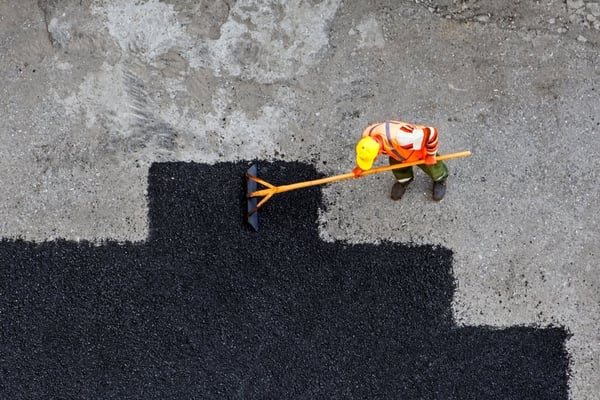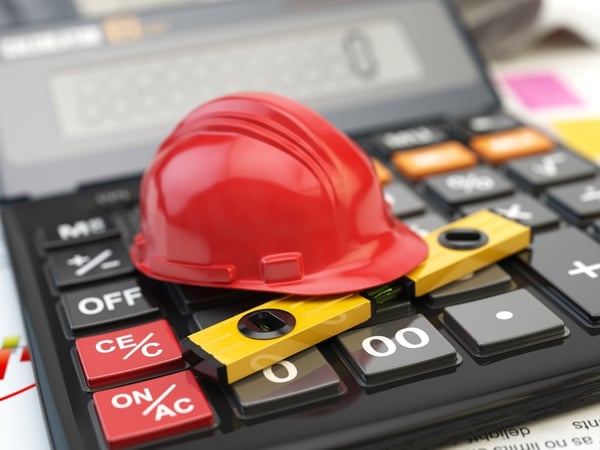1. Underestimating labour costs
2. Failure to assess risks and build in contingencies
3. Failure to conduct a site visit
4. Overlooking costs during estimation
5. Lack of a thorough audit of estimates
Get accurate quotes today
Common construction estimating mistakes – and how to avoid them
Inaccuracy in estimating a construction project can be a very costly mistake. It can result in nasty cost over-runs and blowouts in the project’s construction schedule. We review the most common mistakes that estimators make when pricing a construction job.
Top Five Common Construction Estimating Mistakes
How to estimate construction costs with accuracy requires a high attention to detail, access to up-to-date and thorough information and industry and estimating experience. The top five most common problems with cost estimation in construction are as follows:
1. Underestimating labour costs

Labour is a pivotal part of any construction project, but also famously difficult to estimate. A simple hourly rate calculation applied to the number of workers and hours required can result in significant variations in your “planned vs actual” labour costs. The difficulty lies in the inability to gauge every workers experience and whether subcontractors will be required. Then there are the potential variations in rates depending on where the project is being undertaken and the possible need for overtime. The advice here is to be as detailed as possible when costing labour, factor in overtime and try to source cost per square foot data from similar size projects to improve accuracy.
2. Failure to assess risks and build in contingencies

When estimators fail to perform a thorough assessment of risks and generate a management plan for them, cost variations are commonplace. Without clear risk awareness, the necessary contingencies cannot be identified and cost-overruns occur. The larger the threat, the more detailed the analysis should understand the impact it could have on the project. Experienced estimators are able to identify these and know when the risk means the project is no longer viable for their firm and they will pass on the tender process.
3. Failure to conduct a site visit
In the haste to complete a bid when under time pressure, it is easy to overlook the importance of visiting the project site. Alternatively, experienced estimators may assume they know what is required for the project based on estimates from previous jobs. In reality, this can be a dangerous practice. Site visits allow estimators to understand the nuances of a site, which include access, proximity to labour and material sources, existing structures that require demolition and alteration and site topography.
4. Overlooking costs during estimation

Omitting a cost from your estimation can mean that profitability takes a real hit – once contracts are signed and construction is underway, you are unlikely to be able to recoup the losses. The risk of missing a line item during estimation is heightened if more than one person are contributing to the estimating process, or if you are not using a standardised process or template. Ensure you have designed an estimating process which is standardised and can be applied across all jobs. This will also allow you to compare line-items between different jobs and ultimately take learnings to apply to future estimates.
5. Lack of a thorough audit of estimates
The importance of a detailed review of your numbers prior to submission cannot be overstated. Time pressures can lead to errors in maths, measurements and even the use of incorrect units of measurement, all of which can be costly mistakes. This is where the standardised estimating template will enable you to conduct an easy comparison to previous jobs and identify any anomalies. Budget adequate time to review your estimate before you even start to work on it and hold yourself accountable to it. This will increase the time you have to spend checking your numbers and reduce the chance of inaccuracy.
We trust these construction estimating tips will help improve the accuracy of your next submission.
Why are so many cost estimates inaccurate?
Inaccuracy in cost estimates occurs for a number of reasons, including the following:
- lack of experience in pricing construction projects
- underestimating the complexity of the project
- lack of clear definition of the scope of the project
- inaccuracy of cost information (eg. labour, machinery, permit costs, etc)
- failure to consider site constraints (access, storage, services)
- lack of availability of historical data on similar projects
What is a construction estimator?
A construction estimator is responsible for projecting the labour, material and time required to be able to complete a construction project. They do this by collating and reviewing proposals, plans, specifications and other key documentation.
What is the best estimating software for construction?
There are a number of great estimating software packages available, with some of the top programs as follows:
- Constructor
- DataBuild
- EasyPricePro
- BeamsBuild
- CostX
How do I become a certified construction estimator?
To secure work as an estimator, you require extensive experience within the building and construction industry. Additionally, you will require a formal qualification, such as the Certificate IV in Building and Construction (Estimating). Subscribe to iseekplant's Constructionsht blog below and keep up to date with the latest project and industry news!


